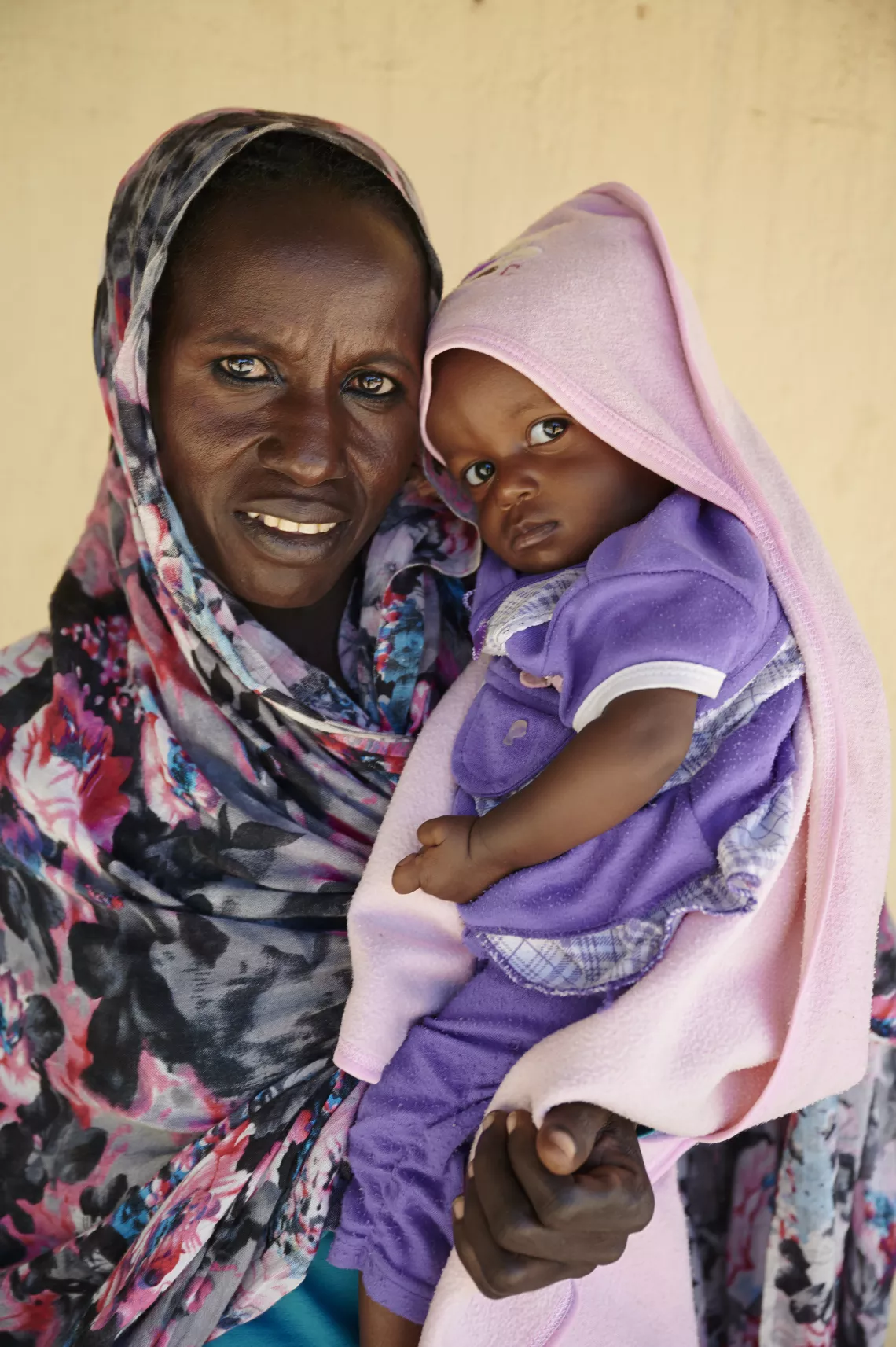Malnutrition: A major threat to children’s lives
Mothers and babies in North Darfur beat malnutrition
- Available in:
- English
- العربية
I want to protect my daughter from malnutrition, I don’t want to lose her as I lost two of my children.
Every year, nearly three million children around the world die due to malnutrition. In Sudan, around 35.5 per cent of children under the age of five are at risk of malnutrition. Good nutrition helps children grow, learn, participate and contribute to their communities, and to be resilient in the face of disease, disasters, and other global crises.
Good nutrition is not only about eradicating hunger it is also one of the key elements for achieving the sustainable development goals, which include eliminating poverty, promoting health and education systems, achieving gender equality, and improving economic growth.
During a field visit to Zam Zam health Centre in El Fasher in North Darfur state, we met Zainab who came with her 11-month-old daughter Maria.

Malnutrition is more than lack of food, it is a condition caused by insufficient protein, energy and micronutrients; frequent infections or disease; poor care and feeding practices; inadequate health services; and poor water and sanitation.

The first 1000 days of a child’s life is the period between a woman’s pregnancy and her child’s second birthday. It is considered as the most critical period in the life of the child because it is the period when the child’s brain begins to grow and develop. It offers a unique window of opportunity to build healthier and more prosperous futures.

Ready to Use Therapeutic Food (RUTF) is a peanut-based life-saving treatment rich in vitamins and energy and is used to treat children who suffer from severe acute malnutrition.

It is necessary to follow the instructions of the health worker regarding the consumption of Ready-to-use therapeutic food (RUTF) and to be consumed according to the recommended period and quantity.



Good nutrition is critical for child survival, health and development. Ready-to-use therapeutic food and health care services will help treat more children like Maria so that every child can enjoy good health, achieve their full potential, and build a bright future.
With thanks to EU Humanitarian Aid, UNICEF will continue to work with its partners to ensure every child in Sudan has access to proper nutrition and healthcare services.
This document covers humanitarian aid activities implemented with the financial assistance of the European Union. The views expressed herein should not be taken, in any way, to reflect the official opinion of the European Union, and the European Commission is not responsible for any use that may be made of the information it contains.




